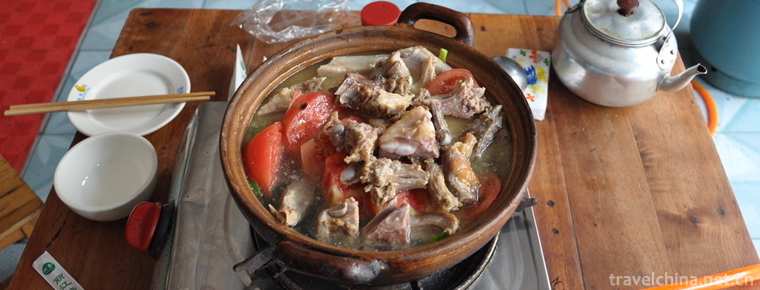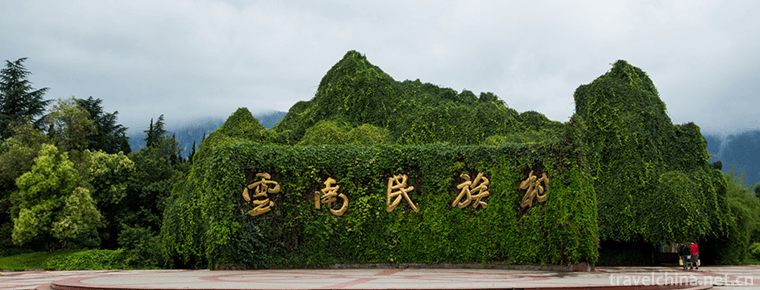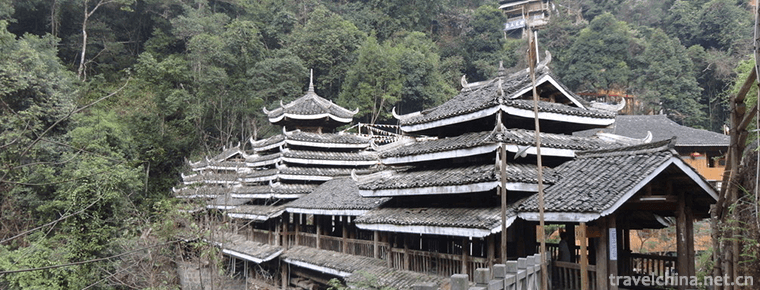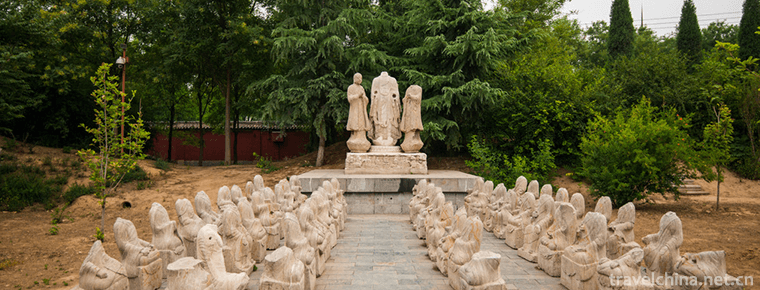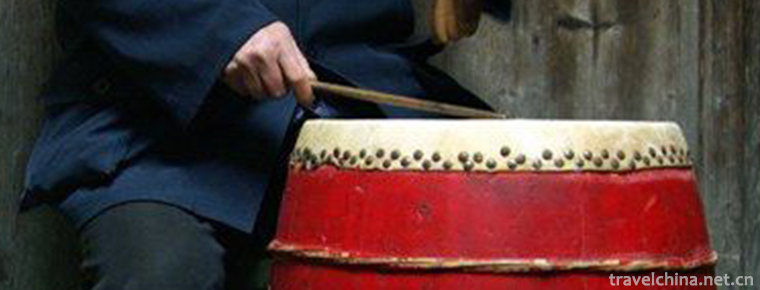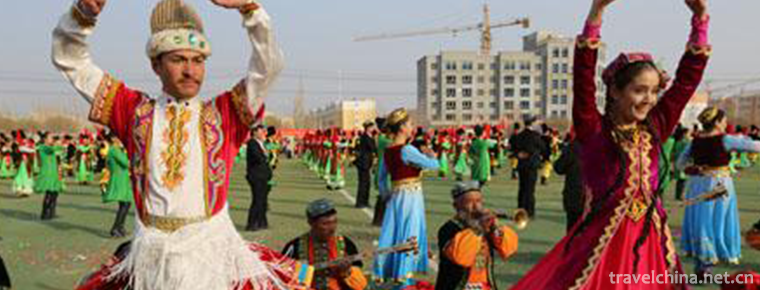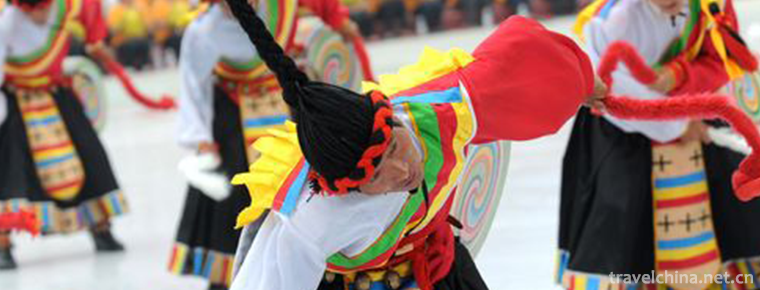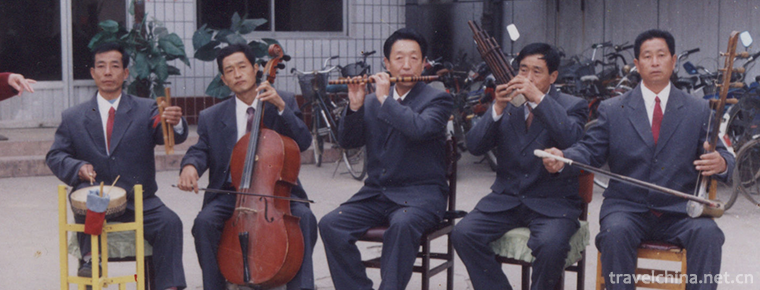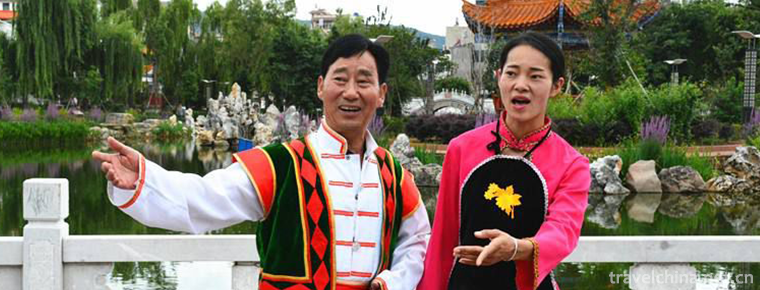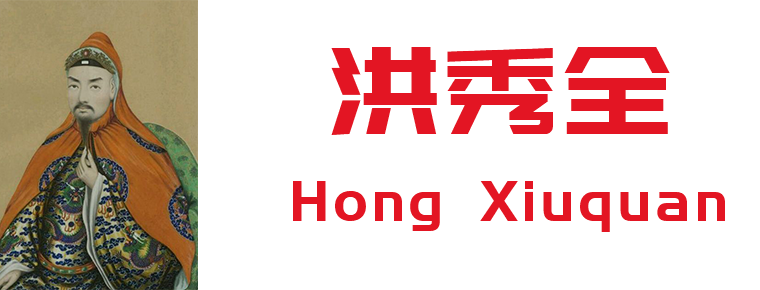Siping Tune
Siping Tune
The Siping tune evolved from the flower drum in eastern Henan. After digging and sorting out, it absorbed the tunes of opera critics, Peking Opera, Henan Opera and so on. It gradually perfected and formed its unique singing and performing style. For the tuning of Huagu Opera, six-edged Gaohu is used as the leading string instrument, the percussion instrument of Bangzi Opera is used to set off the atmosphere, and the singing tune of Huagu Opera is "four levels and eight stability", which forms a local opera with unique local characteristics and is close to the people's life.
Because the evolution and development process of Siping Diao is clear and evident, it is called "the epitome of the development of Chinese opera" by experts in the industry. It has a special position in the development and evolution of Chinese opera art. For more than one hundred years, Siping Diao has been full of the efforts and wisdom of folk artists and has left an excellent place loved by the people on both sides of the ancient Yellow River for hundreds of kilometers. Fang Opera.
As a rare local opera, Siping Diao is only popular in the border areas of Henan, Anhui, Shandong and Jiangsu provinces at present, because it is mainly composed of flower drums and absorbs the melodies of opera critics, Peking Opera, Bangzi and other operas. Some people also call it "Four Pingdao", later renamed "Four Pingdao". Others believe that it is based on its tune four flat eight stable, four sentences one flat named. Siping Diao plays a special role in Chinese traditional opera art and is a wonderful flower in Chinese folk art.
On May 20, 2006, "Shangqiu Siping Diao" was approved by the State Council to be included in the first batch of national intangible cultural heritage list.
In 2008, "Jinxiang Siping Diao" was approved by the State Council to be included in the second batch of national intangible cultural heritage list.
On December 3, 2014, "Dangshan Siping Diao" was approved by the State Council and listed in the fourth batch of national intangible cultural heritage list.
A Brief History of Plays
Siping Diao evolved on the basis of Huagu in eastern Henan. After digging and sorting out, it gradually perfected and formed its unique singing and performing style. It is popular in Anhui, northern Jiangsu, southern Henan, Eastern Henan, western Shandong and southern Shandong. So far, it has a history of more than 60 years. Zou Jiaban, the leader of Dangshan Huagu Opera, and some colleagues have gradually evolved. It and Huangmei Opera, Henan Opera, Opera, Shandong Drum and other operas are one of the more popular local operas. Siping tune originated from Dangshan. Up to now, some opera troupes in Dangshan city and countryside have to rehearse Siping tune. Some middle-aged people, old people and children who like to listen to the opera can hum a few sad melodious Siping tunes in their leisure time.
In 1935, during the performance in Shangqiu County, the academician, artist Yan Yucheng, Xu Ruohai, Wang Peijun, Pong Shirong and Liu Yushun discussed together. According to the fact that male and female performers in flower drums sing in their native voices, the tune is smooth and stable, and there is the name of "flat tune" in flower drums in northern Jiangsu, they proposed to borrow the meaning of "four flat tunes" and use the name of "flat tune" in flower drums to name "four flat tunes". It has been accepted by many flower drum artists.
In 1963, Dangshan County set up Siping Opera Troupe. The troupe traveled to villages and staged many Siping operas, which were very popular.
Since the Ming Dynasty, the rise of Kun Opera, Gao Opera, Pihuang Opera and Bangzi Opera has influenced and promoted the development of various forms of opera art. In the late Qing Dynasty, the eastern, southern, western and Northern flower drums centered around the Longshan area evolved into several other operas through various channels.
After the Republic of China, there were three famous Huagu classes in the border areas of Jiangsu, Shandong, Anhui and Henan provinces. One was Zou Jiaban headed by Zou Yuzhen, Zhangxiaolou Village, Zhouzhai District, Dangshan County; the other was Yanyu Ban headed by Yanyu, Xidoulou Village, Zhouzhai District; and the third was Zhenyou Ban headed by Zhenyou Ming, Peixian County, Jiangsu Province. There are no more than seven or eight students in each class. They often work in northern Jiangsu, northern Anhui, southern Shandong, western Shandong, Eastern Henan and southern Henan.
In 1928, when Zou Jiaban performed in Xinpu Theatre Park, Jiangsu Province, the female characters removed stilts, the male characters removed flower drums, put on dramatic costumes, imitated dramatic costumes, and stepped out of the stall for the first time. In 1931, Dangshan flower drum artists Yan Yucheng, Pong Shiying, Liu Yushun and Fengxian flower drum artists Wang Shijun, Xu Ruohai, etc. performed in Shangqiu Satellite Storytelling Workshop. According to the audience's suggestions, they jointly studied the four-level-eight-stability of flower drums. With the meaning of four-level-eight-stable, they first named it "four-level-tune". Prior to this, due to the continuous improvement of flower drum performance, have used the names of "civilized flower drum", "no string bang", "dry smash bang", "old bang" and so on. At this time, although the Huagu Class was renamed "Siping Tune", there was still no breakthrough in the singing and accompaniment of Huagu.
In 1937, after the July 7th Incident, Zou, Yan and Zhan performed in Taikang, Henan Province. They were named "Three Arts Club" after a short time. "Three Arts Club" was renamed "Mangdao Opera Troupe".
In 1940, the Mangdao Opera Troupe performed with Henan opera performers Li Jinbo, Chen Wanshun and Yang Ford in Anhui. Because the opera had strings at that time, there was no percussion, while the flower drum had strings without strings, which affected the flower drum artists, thus making the flower drum artists have a strong desire to increase strings.
In 1941, the "Mangdao Opera Troupe" and the critics Kong Dian'e, Kong Dianling and Kong Shaokai performed on the same stage. Once again, they were influenced by strings, which made it more urgent to increase strings.
In 1946, when the "mandang Troupe" was performed in Bo County, Anhui, Zou Yuzhen, Yan Yu Cheng, Zhang Xinkui and others came forward and hired Yang Xuezhi, the third string opera troupe of Henan Province, to play the chord with Yang Xuezhi, and began to study and practice the chord of flowers and drum together with Han Han et al. Characteristic, and the melody of flower drum integration, determine the "four flat tunes" for 2, 1, 6, 1 of the vocal fallout format, and use six lengths Erhu waist code down to set the chord, called Gaohu as the main string music. Since then, stringed accompaniment has been added, and "flower drum" has evolved into "four flat tunes", which has resulted in the birth of "four flat tunes", a new type of local opera, and then the addition of yueqin, three strings, suona, sheng, flute and other instruments, and further improved. "Flower Drum" has evolved into "Four Flat Tunes". It not only changed the name of the opera, but also improved the repertoire, performing arts and stage equipment. Clothing and props, like other operas, are all available. New breakthroughs have also been made in the performing arts of singing, reading, doing and playing. At first, Siping Diao performed more "three small plays" (Xiaosheng, Xiaodan. Clown). After liberation, it gradually formed such trades as Sheng, Dan, Jing, Duan and Ugly. It can perform not only small plays, but also large-scale dramas, as well as literary and martial arts plays, various excellent traditions and modern dramas of large, medium and small scale. In the performing arts, "Siping Diao" retains the artistic characteristics of the combination of singing, dancing and rap of flower drums. When performing excellent traditional operas, it mostly adopts the disguise method and facial makeup of Peking Opera.
In 1947, after the artists led by Zou Yuzhen and Wang Hanchen moved to Shangqiu, they were accepted by the people's government in 1949, renamed the popular theatre troupe of Zhuji (today's Shangqiu City) in 1950, changed to Shangqiu People's Troupe in 1951, and began to recruit young actors. In the same year, there were Jinxiang, Shanxian and Cao counties in Shandong, Fengxian and Peixian in Jiangsu, Dangshan County in Anhui Province, and Fanxian and Changheng County in Henan Province, where professional and amateur Siping Opera Troupes were set up successively, totaling more than 30, showing a flourishing and prosperous scene. In 1956, Comrade Zou Aiqin, Shangqiu Siping Opera Troupe, starred in Chen Sanliang Climbing Hall, Fanxian Siping Opera Troupe, Li Xiuying, starred in Fengluochi in 1959, and Piaogua Garden, starring Liu Xiaohui, Wang Hanting and Dong Junrui, in 1965, in Henan Province, featured her (his) pure and melodious music, plain and beautiful singing. The genuine words and clear-cut singing skills won the appreciation of opera workers and audiences both inside and outside the province, and expanded the influence of this new type of opera in the whole country.
With the joint efforts of the old artists and artists, Siping Diao, a young opera, has gradually enriched and improved its singing music, performing skills and stage art. At the same time, it has also processed and sorted out a number of traditional operas, such as Mei Xiang, Li Yanming, Hui Long Zhuan, Green Peony, Pearl Shirt, Xiao Baogong and so on. It has also created a number of modern dramas such as Pickled Melon Garden, Body Money, Delivery Road, Xie Medium, Birthday Tears, Mother, Family Storm and so on. Originally only performed in rural and small towns in the border areas of Henan, Shandong, Anhui, Jiangsu, Shanxi, Shaanxi and Hebei provinces, it has developed into large and medium-sized cities in Henan, Shandong, Anhui, Jiangsu, Shanxi, Shaanxi and Hebei provinces, and has been loved by the audience.
However, in the past decade, the wide popularity of TV and family cinema has seriously impacted the art of opera. The national Siping Opera Troupe has been reduced from more than 30 to 45. Most of the performers and staff have changed their professions and are facing crisis and need urgent rescue. By 2014, there were only three professional Siping Opera Troupes in Shangqiu City, Fanxian County, Henan Province and Chengwu County, Shandong Province. They cooperated and exchanged with each other.
Traditional drama
Traditional operas include Xiaobao Gong, Xiaoyinian, Chen Sanliang Climbing Hall, Li Yanming, Xiaoguxian and so on. By the 1950s and 1960s, Dangshan Siping Opera Troupe rehearsed a large number of modern operas, such as Jiao Yulu, Baimao Nu and After the Harvest. The scope of performance has been expanding and highly praised. There are more than 20 modern operas rehearsed. There are different opinions on the names of slab singing. According to the pattern of Huagu Opera, it can be divided into four parts: two or four boards, , , , [loose board], etc. The basic aria is usually composed of four phrases, four phrases one turn. Danjiao's singing is similar to Peking Opera, Xiaosheng is similar to Peking Opera, Xusheng and Huafa sing Bangzi tune. Except for Danjiao, other characters sometimes have inconsistent lines and strings before they are finally unified. Usually after a period of singing, the last sentence is left for other characters to sing. The accompaniment instruments are mainly high-pitched Erhu, including Sheng, flute, Suona, dulcimer, erhu, three strings and pipa.
artistic characteristics
Siping Diao is based on flower drums and absorbs a lot of artistic nutrition from other sister operas, thus forming an artistic style with strong regional characteristics. Female voice is not only elegant but also elegant and elegant, while male voice is both high and bold, rigid and soft, retaining strong rap characteristics.
Siping tune is very close to Erhuang tune. Siping tune is also called flat Erhuang tune. It is further developed from the rolling tune of Qingyang tune in Anhui Province. In the traditional Beijing Opera repertoire, Siping tune is sung in all walks of life except Huafa. Siping tune is similar to Erxanthan board, which combines two styles of tune of Xipi Erhuang. Jinghu should be accompanied by Erhuang position. There are not many flat-tuned slabs, only the original slab and the slow slab. The melodies of the two slabs are basically the same, but the rhythm and speed are different. We call moderate rhythm the four-level adapter and slow rhythm the four-level adapter.
Inheritance of Artists
In 2008, Zou Aiqin and Baijinrong (Shangqiu Opera Troupe) of Shangqiu Siping Opera Troupe won the title of representative successor of the national intangible cultural heritage project and assumed the responsibility of inheriting and protecting Siping Opera.
Zhang Xubin and Cui Taixian (Puyang Fanxian Opera Troupe)
Wang Fengyun (Shandong Chengwu County Opera Troupe)
Liu Yuzhi (Jinxiang County, Shandong Province)
Inheritance Significance
Siping Diao is a kind of opera with a deep mass foundation. Chen Sanliang Climbing Hall, Xiaobao Gong and Dumb Women's Bill are all popular dramas. At the same time, because the evolution and development process of Siping Diao from beginning to present is clear and evident, it is called "a miniature of the development of Chinese opera". It has a special position in Chinese opera art and is a wonderful flower in Chinese folk art.
The state attaches great importance to the protection of intangible cultural heritage. On May 20, 2006, Siping Diao, declared by Shangqiu City, was listed in the first batch of national intangible cultural heritage list with the approval of the State Council.
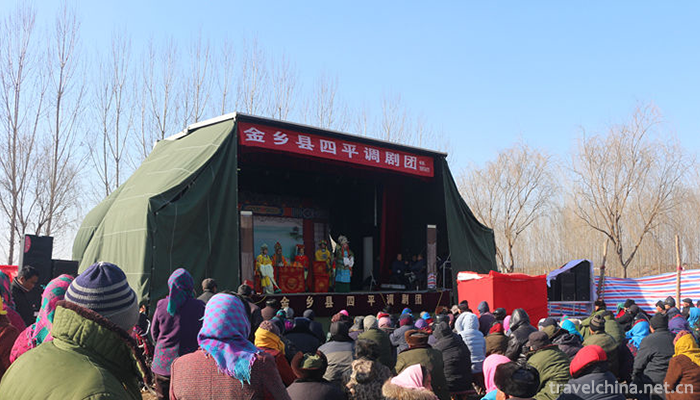
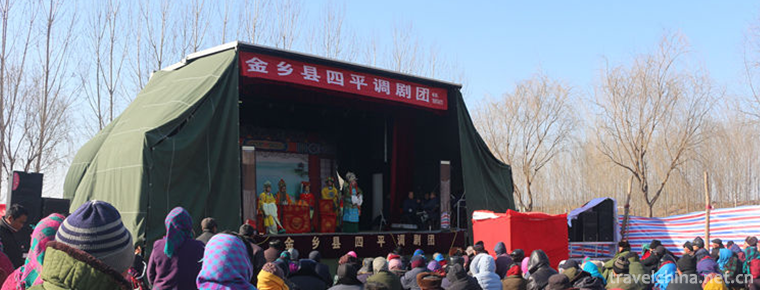
Siping Tune
-
Lijiang bacon pork
Views: 378 Time 2018-10-17 -
Yunnan Nationalities Village
Located in the southwest suburb of Kunming City, Yunnan Province, Yunnan Ethnic Village covers 89 hectares. It is a window reflecting and displaying the social and cultural customs
Views: 129 Time 2018-12-22 -
Longsheng Hot Spring Resort
Longsheng Hot Spring is located 32 kilometers northeast of Longsheng County. It takes 40 minutes to get to Longsheng Hot Spring by bus from the county town. Hot springs are gushed from rock strata 120
Views: 199 Time 2019-02-06 -
Longxing Temple
Longxing Temple, alias Dafo Temple, is located in Dongmenli Street, Zhengding County, Shijiazhuang City, Hebei Province. It was originally Longteng Garden of Yanmu Rongxi after the Eastern Jin Dynasty
Views: 189 Time 2019-02-06 -
Lishui drum words
Lishui Drum Ci is a popular rap art in Liandu and its surrounding areas in Lishui City, Zhejiang Province. Lishui Drum Ci originated from the Tang Dynasty. During the reign of Emperor Li Shimin, it wa
Views: 351 Time 2019-05-13 -
Sama Dance
Sama dance is a kind of folk dance that the Uygur working people dance together during the New Year's Festival. Its movements are simple and powerful. It is mainly popular in Kashgar and Shache of Sou
Views: 138 Time 2019-06-12 -
Guozhuo Dance in Shannanchang
Shannanchang Guozhuo Dance is a kind of waist drum, which originated in Dabu (now Jiacha) area. Legend has it that in the mid-eighth century, with the help of Buddhist masters such as lotus and peanut
Views: 209 Time 2019-06-13 -
Four strands
Four-strand string, also known as four-strand string, two-strand string, five-tune string and five-tune tune tune tune, is one of the ancient traditional local operas in China. It originates from Julu
Views: 410 Time 2019-06-16 -
Yao an Bazi Cavity
On June 7, 2008, Yao'an Baziqiang, declared by Yao'an County, Yunnan Province, was listed in the second batch of national intangible cultural heritage list with the approval of the State Council. Heri
Views: 337 Time 2019-07-11 -
Hong Xiuquan
Hong Xiuquan (January 1, 1814 - June 1, 1864) was famous for his show. In order to avoid God's "Huo Huo Hua", Jehovah "Homonym" has been changed to the present name, the founder of
Views: 229 Time 2019-09-07 -
Introduction to Chinese embroidery
Embroidery, known as needle embroidery in ancient times, is a kind of technology that uses embroidery needle to guide color thread, embroiders the designed patterns on textiles, and forms patterns with embroidery traces. In ancient times, it was called "Juju" and "pinju".
Views: 121 Time 2020-12-12 -
Geographical environment of Mianyang
Mianyang City is located in the northwest of Sichuan Basin, in the middle and upper reaches of Fujiang River, bordering Qingchuan county and Jiange County of Guangyuan City in the East, Shehong city and Daying County in Suining City in the south, Luojiang
Views: 340 Time 2020-12-14
